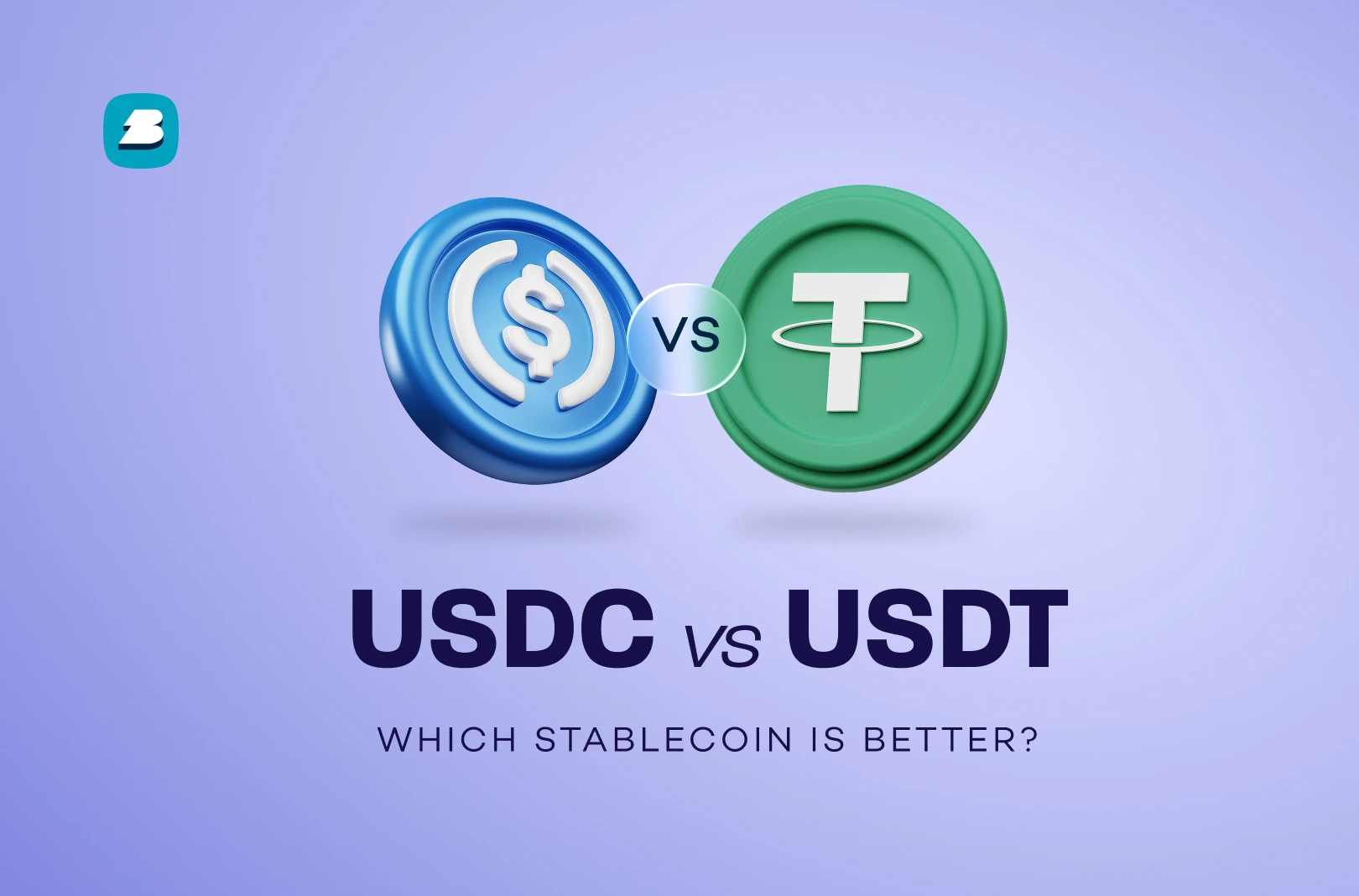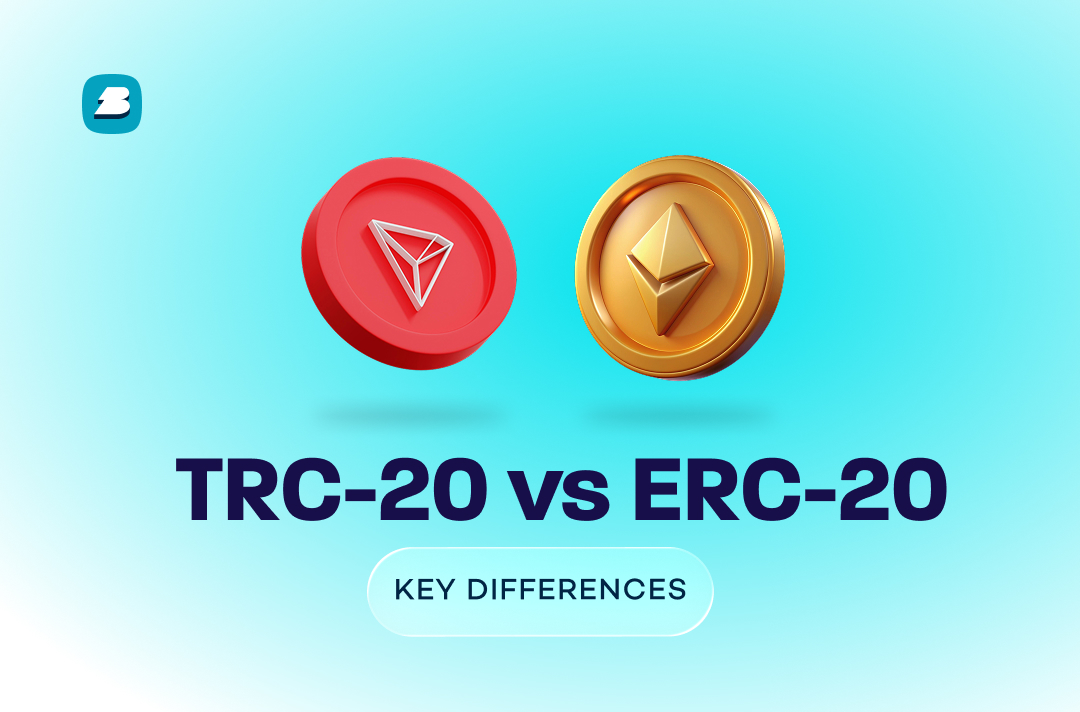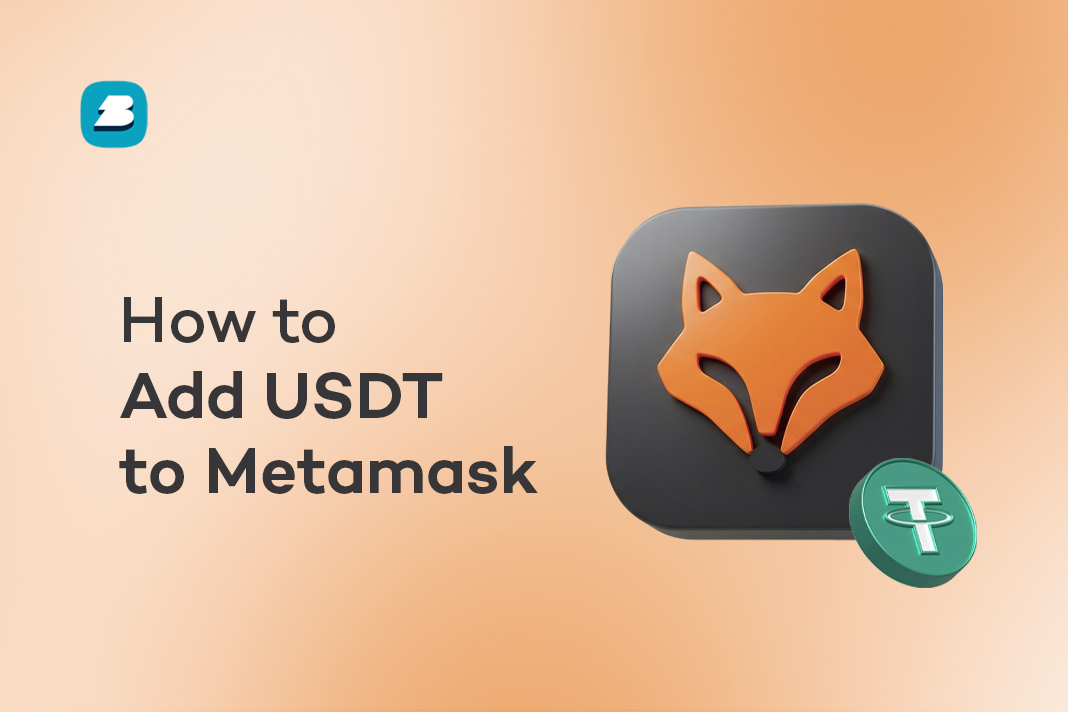Sending USDT might seem simple, until you realize there are different wallet address types, and using the wrong one could cost you your funds.
That’s where the BEP20 wallet comes in.
Built on the Binance Smart Chain, BEP20 is known for fast transactions and low fees, making it a solid option for anyone who regularly moves USDT or other tokens.
In this article, we’ll break down what a BEP20 wallet is, how it works, what makes it different from other USDT wallet types, and how you can get one quickly and easily.
What is a BEP20 Wallet?
A BEP20 wallet is a type of crypto wallet that’s made to support tokens built on the Binance Smart Chain.
It’s like your digital account where you can store, send, and receive BEP20 tokens such as USDT, BNB, and others.
You’ll usually get a BEP20 wallet when you create an account on platforms like Trust Wallet, MetaMask, or Binance.
It comes with a unique address that you can share when someone wants to send you tokens through the BSC network.
Related:
What Blockchain Does BEP20 Wallet Run On?
The BEP20 wallet runs on the Binance Smart Chain (BSC), which is a fast and low-cost blockchain created by Binance.
This blockchain was designed to make sending and receiving crypto much cheaper and quicker than older networks like Ethereum.
Because of its speed and low fees, BSC has become very popular for trading, DeFi apps, and sending stablecoins like USDT.
What Kind of Tokens Does the BEP20 Wallet Support?
A BEP20 wallet supports BEP20 tokens, which are tokens built specifically for the Binance Smart Chain. Some of the most common ones include USDT (Tether), BUSD (Binance USD), BNB (Binance Coin), and even some gaming or DeFi tokens.
As long as the token is BEP20-based, your wallet will be able to store and manage it.
Just make sure the sender is using the BSC network before receiving any tokens.
BEP20 vs Other Wallet Types (ERC20, TRC20)
There are different types of wallet addresses depending on the network you’re using.
The most common ones for USDT and other tokens are BEP20, ERC20 wallet, and USDTRC20 Contract Address. They all serve the same basic purpose but work on different blockchains, and that’s where the real differences show up.
- BEP20 works on the Binance Smart Chain, and it’s known for being fast and cheap. Sending USDT over BEP20 usually costs a small fee and gets confirmed quickly, which makes it a favorite for many crypto users.
- ERC20 runs on the Ethereum network. It’s widely supported and very secure, but it often comes with higher gas fees. This can make sending small amounts expensive, especially when the network is busy.
- TRC20 is based on the TRON network. It also offers fast and low-cost transfers, similar to BEP20, and is especially popular for sending USDT with zero or near-zero fees.
In short, BEP20 is a solid middle ground. It is faster and cheaper than ERC20, and just as easy to use as TRC20. The key is to always use the right wallet type that matches the network you’re sending or receiving on.
Comparing BEP20, ERC20 and the TRC20 Wallet Address
| Wallet Type | Blockchain | Network Fees | Transaction Speed | Popular For |
|---|---|---|---|---|
| BEP20 | Binance Smart Chain (BSC) | Low | Fast | Low-cost USDT transfers, BNB tokens, DeFi |
| ERC20 | Ethereum | High | Slower (especially when congested) | Smart contracts, widely used tokens |
| TRC20 | TRON | Very Low | Fast | Zero-fee USDT transfers |
Top Pick:
- The Best 9 USDT Trading Platforms, Ranked
Why You Might Need a BEP20 Wallet

A BEP20 wallet is more than just a place to hold your crypto. It comes in handy for a number of everyday crypto activities. Here are some common reasons why you might want to have one:
1. To Receive USDT on the Binance Smart Chain
If someone wants to send you USDT using the Binance Smart Chain, you’ll need a BEP20 wallet address. It’s quicker and cheaper than using the ERC20 version.
For example, apps like Binance, Trust Wallet, or Pyypl allow you to receive USDT directly to your BEP20 wallet without high fees.
2. For Lower Transaction Fees
One of the biggest reasons people use BEP20 wallets is to save money on gas fees.
Sending tokens on Ethereum can cost a lot, especially during busy periods.
With BEP20, the fees are usually very low, often just a few cents. This makes it great for sending and receiving crypto regularly without worrying about extra charges.
3. To Access DeFi Apps on Binance Smart Chain
The Binance Smart Chain supports many decentralized finance (DeFi) apps, like PancakeSwap, Venus, and ApeSwap. These platforms let you trade tokens, earn interest, or farm yields.
You need a BEP20 wallet like MetaMask (with BSC added) or Trust Wallet to connect and use these apps.
4. To Store BEP20 Tokens Safely
If you’re holding tokens like BNB, BUSD, or other BEP20 tokens, you’ll need the right kind of wallet to store them.
A BEP20 wallet ensures that your tokens are stored correctly and can be accessed whenever you need them. It’s also easier to track your tokens in one place.
5. To Swap or Trade Tokens Easily
Many crypto wallets and platforms now allow token swaps directly inside the app.
If your wallet supports BEP20 tokens, you can swap between BNB, USDT, or even new altcoins without needing a centralized exchange. Apps like Trust Wallet and SafePal offer this feature.
Top 5 Platforms To Create a BEP20 Wallet in Minutes
Here are the top 5 platforms to create a BEP20 wallet in minutes:
- Trust Wallet
- Binance
- MetaMask
- SafePal
- TokenPocket
You don’t need any tech skills to create a BEP20 wallet.
Most popular crypto apps already support the Binance Smart Chain and can create a BEP20 address for you in just a few steps.
Whether you want to receive USDT, trade BNB tokens, or connect to DeFi platforms, here are five trusted platforms you can use to create a BEP20 wallet easily.
1. Trust Wallet
Best for: Full access to BEP20 tokens and DeFi apps
- Download the Trust Wallet app from the Play Store or App Store.
- Set up a new wallet and save your recovery phrase.
- Once inside, search for tokens like USDT, BNB, or BUSD and enable them.
- Tap on the token, then tap “Receive.”
- The wallet address shown is your BEP20 address, ready to receive funds.
Trust Wallet automatically supports Binance Smart Chain, so there’s no need to manually set it up.
2. Binance
Best for: Buying, sending, and managing BEP20 tokens
- Sign up at binance.com or through the Binance app.
- Go to “Wallet” > “Funding” or “Spot.”
- Select “Deposit” and choose USDT or any BEP20-supported token.
- Pick BNB Smart Chain (BEP20) as the network.
- You’ll see your BEP20 wallet address — copy and use it for deposits.
Binance supports multiple networks, so make sure you choose BEP20 to avoid any issues.
3. MetaMask
Best for: Using BEP20 with browser extensions and DeFi platforms
- Install the MetaMask browser extension or mobile app.
- Create a new wallet and save your recovery phrase.
- By default, MetaMask is set to Ethereum, so you’ll need to manually add Binance Smart Chain.
- Use the following BSC settings:
- Network Name: BNB Smart Chain
- RPC URL: https://bsc-dataseed.binance.org/
- Chain ID: 56
- Symbol: BNB
- Block Explorer URL: https://bscscan.com
- Once added, your wallet will now support BEP20 tokens. Use the “Account” address shown to receive BEP20 tokens.
MetaMask is perfect if you want to interact with BSC-based DeFi tools like PancakeSwap.
4. SafePal
Best for: Secure mobile wallet with hardware support
- Download the SafePal app from your phone’s app store.
- Create a new software wallet or connect a hardware wallet.
- Go to “Wallet” and search for BNB Smart Chain or USDT BEP20.
- Tap “Receive” to view your BEP20 address.
SafePal supports a wide range of tokens and networks and is ideal for users who prioritize security and versatility.
5. TokenPocket
Best for: Easy mobile access to BEP20 tokens and Binance dApps
- Download the TokenPocket app on Android or iOS.
- Create a new wallet and back up your recovery phrase.
- Choose “Binance Smart Chain” when setting up the wallet.
- Once inside, tap on BNB or USDT (BEP20) and select “Receive.”
- Your BEP20 wallet address will appear — copy it and use it to receive tokens.
TokenPocket also comes with a built-in browser for exploring BSC dApps like PancakeSwap, making it a good option if you’re just getting started with Binance Smart Chain.
You Might Like:
- Top 11 Crypto Exchanges in Nigeria
How to Use Your BEP20 Wallet Safely

BEP20 wallets are easy to use, but one small mistake can lead to lost funds or security risks.
Here are five simple ways to protect your wallet, with real examples to guide you.
1. Always Double-Check the Network Before Sending
Make sure you’re using the BNB Smart Chain (BEP20) network when sending or receiving tokens.
Each network has its own address type, and using the wrong one could lead to failed or lost transactions.
Example: If someone wants to send you USDT and selects ERC20 instead of BEP20, your Trust Wallet address might still accept it, but the tokens won’t show up unless you manually add the token, and in some cases, the funds could be unrecoverable.
What to do: Confirm with the sender that they are using BEP20 as the network. Also, when withdrawing from exchanges like Binance or KuCoin, always select BNB Smart Chain (BEP20) as the network option.
2. Never Share Your Recovery Phrase
Your recovery phrase (also called seed phrase) is the only way to restore your wallet if you lose your phone or app access.
If someone gets hold of it, they can drain your wallet instantly.
Example: Scammers often send fake “airdrop” links or support messages asking you to “verify” your wallet by entering your 12 or 24-word phrase. Once you do, they’ll clean out your funds.
What to do: Write your recovery phrase on paper and store it somewhere private. Don’t take a screenshot or save it in your phone notes, email, or Google Drive.
3. Use a Trusted Wallet App or Platform
Only use official wallet apps downloaded from the Google Play Store, Apple App Store, or the wallet’s official website. Fake apps often look identical but are designed to steal your funds.
Example: Some users have downloaded a fake version of MetaMask from a third-party website, entered their recovery phrase, and had their entire balance stolen within minutes.
What to do: Always search for the wallet’s official website (e.g., trustwallet.com or metamask.io) and follow the verified download link. Avoid downloading crypto apps from ads or random Telegram links.
4. Test with a Small Amount First
Before making a large transfer, try sending a small amount first. This helps confirm the wallet address and network are correct.
Example: Let’s say you’re withdrawing USDT from Binance to your BEP20 wallet. Instead of sending the full $500 at once, send $5 first. If everything goes through and shows up correctly, then send the rest.
What to do: This is especially useful if it’s your first time using a new wallet or if someone sent you a wallet address to send funds to.
5. Watch Out for Phishing Links
Scammers create fake websites that look just like the real thing to trick you into connecting your wallet or giving up your private info.
Example: A fake PancakeSwap site might ask you to “connect wallet” and immediately drain your funds once you approve a fake transaction.
What to do: Always check the URL before visiting a site. Bookmark trusted sites and avoid clicking unknown links from emails, DMs, or pop-ups.
Conclusion
Having a BEP20 wallet makes it easier to send, receive, and manage your crypto with low fees and fast transactions. Whether you’re using it for USDT, BNB, or DeFi apps, it’s a smart tool for anyone getting serious about crypto.
And when it’s time to turn your crypto into cash, you don’t need to stress. Breet makes it simple to sell USDT to naira easily, no trading, no complicated steps. Just receive and withdraw.
Set up your wallet, stay safe with the tips above, and enjoy the full benefits of using BEP20 the right way.
FAQs on BEP20 Wallet
What is a BEP20 wallet?
A BEP-20 wallet is a crypto wallet that supports tokens on the Binance Smart Chain (BSC). It’s like a digital purse where you can store, send, and receive BEP-20 tokens like BNB, USDT, and others.
How do I get my BEP20 wallet address?
To get your BEP-20 address, open a supported wallet like Trust Wallet or MetaMask, switch to Binance Smart Chain, and copy your address. It usually starts with “0x”, just like Ethereum addresses.
Which wallet is best for BEP20?
Popular wallets for BEP-20 include Trust Wallet, MetaMask, and SafePal. Trust Wallet is beginner-friendly, while MetaMask is great if you want to connect to DeFi apps.
What is the DEX BEP20 wallet?
A DEX BEP-20 wallet is a wallet you can use with decentralized exchanges (DEXs) on the Binance Smart Chain—like PancakeSwap. These wallets let you trade tokens without needing a central exchange.
How to withdraw money from BEP20?
To withdraw from a BEP-20 wallet, send your tokens to a crypto exchange that supports BEP-20 (like Binance), then convert to fiat and withdraw to your bank. Make sure you’re using the correct network to avoid loss.
Which crypto network uses BEP20?
The BEP-20 token standard is used on the Binance Smart Chain (BSC), which is designed for fast, low-cost transactions.
Is USDT a BEP20?
Yes, USDT exists as a BEP-20 token on Binance Smart Chain, but it also exists on other networks like Ethereum (ERC-20) and Tron (TRC-20). Always double-check the network before sending.







